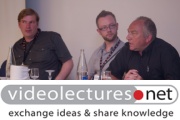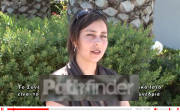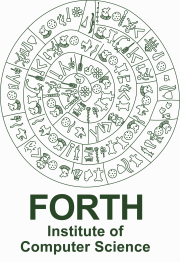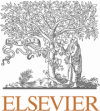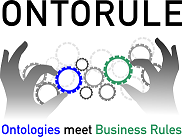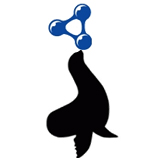| Call for Research Papers |
 |
 |
 |
|
The mission of the Extended Semantic Web Conference (ESWC2010) is to bring together researchers and practitioners dealing with different aspects of semantics on the Web. ESWC2010 builds on the success of the former European Semantic Web Conference series, but seeks to extend its focus by collaborating with other communities and research areas, in which web semantics play an important role -- within and outside ICT. At the same time, ESWC2010 is a truly international conference, not only "European". Semantics of web content, enriched with domain theories (ontologies), data about web usage, natural language processing, etc. will enable a web that provides a qualitatively new level of functionality. It will weave together a large network of human knowledge and make this knowledge machine-processable. Various automated services, based on reasoning with metadata and ontologies, will help the users to achieve their goals by accessing and processing information in machine-understandable form. This network of knowledge systems will ultimately lead to truly intelligent systems, which will be employed for various complex decision-making tasks. Research about web semantics can benefit from ideas and cross-fertilization with many other areas: Artificial Intelligence, Natural Language Processing, Database and Information Systems, Information Retrieval, Multimedia, Distributed Systems, Social Networks, Web Engineering, and Web Science. ESWC2010 will present the latest results in research and applications in its field. The research program will be organised in targeted research tracks. In addition, the conference will feature a tutorial program, system descriptions and demos, a posters track, a Ph.D. symposium, and a number of collocated workshops. The individual calls for these events can be found on the conference Web site (http://www.eswc2010.org/). Important DatesAbstract Submission December 15, 2009 (compulsory)
Conference TracksTo reflect its extended scope, the ESWC2010 research program is organised in a number of tracks. Their specific topics of interest and submission addresses are listed below.
Web of DataOver the last several years, billions of triples have been published as Linked Open Data. This networked data set provides a resource for both the development of novel applications and the enrichment of others. While there are some existing applications (e.g. generic linked data browsers), there are still numerous research challenges in creating and supporting applications based on the Web of Data. We encourage submissions to this track that build on existing, Linked Open Data sources for evaluation and implementation. In the context of the Web of Data, this track is interested, among others, in the following topics:
Papers should be submitted through the Easychair system: http://www.easychair.org/conferences/?conf=eswc2010webofdatatrack
Ontologies and ReasoningThe Ontologies and Reasoning programme involves the management of and reasoning with ontologies and rules, so as to support their applications. The central idea of this vision is to use (1) ontologies to encode application data in a machine understandable form, in order to be able to automatically integrate data from different sources and to be able to support semantic search for information based on its meaning rather than its syntactic form, and (2) rules to perform conditional decision, event processing and actions on behalf of the user. In this track we invite high-quality submissions related (but not limited) to the following topics:
Papers should be submitted through the Easychair system: http://www.easychair.org/conferences/?conf=eswc2010ontologiesandreasoning
Software and ServicesThe software industry in Europe competes aggressively, both for a share of the local market (representing 30% of global spending), and worldwide, resulting in a revenue in billions of euros. Increasingly Software as a Service (SaaS) is opening up previously entrenched markets so that it is essential to support its adoption. Already, service-orientation has rapidly risen to prominence in application construction at enterprise scale, and ontology-based semantics has proven its usefulness in this arena. At the same time Web-based systems, especially in the context of Web 2.0 and the Semantic Web, are increasingly built from more lightweight, so-called RESTful services. This track is interested in both ends of this spectrum, and on the cross-fertilization of semantics-based support for the engineering, deployment, provisioning and consumption of services. Particular topics of relevance are:
Papers should be submitted through the Easychair system: http://www.easychair.org/conferences/?conf=eswc2010servicesandsoftwaretra Mobility The web is used more and more in a ubiquitous way through mobile phones and devices. They interact directly with our physical environment, and are used in a personalized and contextualied setting. This track solicits papers dealing with issues related to web semantics and mobility in, e.g., the following areas:
Papers should be submitted through the Easychair system: http://www.easychair.org/conferences/?conf=eswc2010mobilitytrack
Sensor NetworksMillions of sensors are currently deployed in sensor networks around the globe, and are actively collecting enormous amounts of data. Together with legacy data sources, specialized software modules (e.g., modules for mathematical modeling and simulation) and Web 2.0 technologies such as mashups, sensor networks give us the opportunity to develop unique applications in a variety of sectors (environment, agriculture, health, transportation, surveillance, public security etc.). Although many of the engineering issues associated with managing sensor network data are solved, managing effective access to this data remains a challenge. We would like to receive papers that deal with how the core ideas and technologies of the Semantic Web have been or can be applied to sensor networks to help manage access. In this track we invite high-quality submissions related to (but not limited to) one or more of the following topics:
Papers should be submitted through the Easychair system: http://www.easychair.org/conferences/?conf=eswc2010sensornetworkstrack
Web ScienceWeb Science bridges and formalizes the social and technical aspects of the World Wide Web. Its research questions include, for example: How do people and organisations behave on-line when doing business and in private life? How is security, privacy, and trust created and maintained on the Web? How can the Web be kept stable and pro-human in the future? Answering questions like these requires understanding of human behaviour, semantics and pragmatics, and technological design on the web. The themes of this track include (but are not limited to) the following topics:
Papers should be submitted through the Easychair system: http://www.easychair.org/conferences/?conf=eswc2010websciencetrack
Social WebThe success of Social Web applications (often called “Web2.0” applications), such as Twitter, Wikipedia and Facebook, is evidenced by the fast growing social networking and Web content contributed by millions of end users. The Social Web has simplified the data publishing process using end user friendly, interactive tools and has increased user motivation to contribute data. The combination of Social Web with approaches from the emerging Semantic Web allowed end users to massively produce and utilize semantic data through tagging and other annotations, which in turn enables smarter applications in various Web domains including Social Web itself to mine the semantic data and discover relationships that were not obvious previously. These can be exploited for various purposes, for example, to personalize applications, recommend content, and generate new knowledge. In the past two years, there have been growing efforts in building a Social Semantic Web that exploits both the Social Web and semantic techniques. This track is aimed at bringing together researchers from the two communities to address various challenges from improving Social Web user experiences with semantic techniques to building novel semantic applications using Social Web data. Successful submissions will address at least some aspect of both areas. Topics of interest include, but are not limited to:
Papers should be submitted through the Easychair system: http://www.easychair.org/conferences/?conf=eswc2010socialwebtrack
Semantic Web in UseDemonstrating the beneficial use of research results in real world settings is a major challenge. The Semantic Web in Use track is particularly devoted to showcase implemented applications, learned best practices as well as assessments and evaluations of semantic technologies in specific domains. Submissions to this track should substantially contribute to the transition from research labs into mainstream adoption in areas such as industry, science, society, government or entertainment. In this track we invite high-quality submissions related to (but not limited to) one or more of the following topics:
Papers should be submitted through the Easychair system: http://www.easychair.org/conferences/?conf=eswc2010semanticwebinusetrack SubmissionsESWC2010 welcomes the submission of original research and application papers dealing with all aspects of representing and using semantics on the web. We encourage theoretical, methodological, empirical, and applications papers. The proceedings of this conference will be published in Springer's Lecture Notes in Computer Science series. Paper submission and reviewing for ESWC2010 will be electronic via the conference submissions site. Papers should not exceed fifteen (15) pages in length and must be formatted according to the information for LNCS authors. Papers must be submitted in PDF (Adobe's Portable Document Format) format and will *not* be accepted in any other format. Papers that exceed 15 pages or do not follow the LNCS guidelines risk being rejected automatically without a review. Authors of accepted papers will be required to provide semantic annotations for the abstract of their submission -- details of this process will be provided on the conference Web page at the time of acceptance. At least one author of each accepted paper must register for the conference. Each paper must be submitted to the most appropriate of the eight research tracks:
Best Paper AwardAn award will be given to the best paper (or papers) submitted to the conference as judged by the Program and Track Chairs in collaboration with the Program Committee.
|
